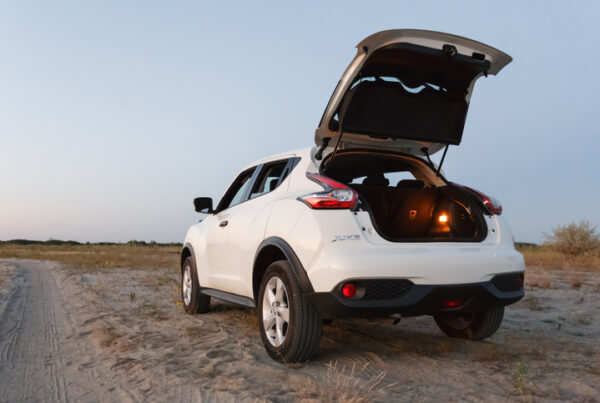As part of the 2018 Australasian Fleet Conference & Exhibition attendees were invited to be part of a workshop, facilitated by the National Road Safety Partnership Program (NRSPP), which explored how fleet managers could contribute to the next National Road Safety Strategy (NRSS). The workshop was titled “Let’s get the vehicle as workplace in the NRSS”, and to date the strategy has not effectively included actions for government or industry relating to driving for work.
As presenter Jerome Carslake from the Australian Road Research Board (ARRB) put it, there is a growing need for government and industry action to happen if there is to be any serious reduction in road trauma.
“The aim from all of this was really to take a leadership approach and to have an overall review of the national road safety policy,” he says.
“This project has largely been a result of a significant kick-up in deaths and fatalities on Australian roads in recent times.”

Jerome Carslake
And he makes a good point. A recent interview with Road Safety Advisory Council chair Garry Bailey used the rise in Tasmanian road fatalities as an illustration of why vehicle safety still wasn’t being taken seriously by the broader community.
“The people who work in the road safety branch, who are so committed to bringing down this road toll … everyone feels this, and it’s very frustrating when all these crashes are avoidable if we modify our behaviour behind the wheel,” Bailey said at the time.
“So people crashing, you might be more likely to survive because of a five-star rated car, but you’re still going to be seriously injured.”
The current strategy in play acknowledges how driving for work poses the greatest risk to any worker as demonstrated by Safe Work Australia’s own stats. This data revealed that two thirds of work related fatalities involve a vehicle, with half of them occurring on public roads. According to data from Zurich, the risk for serious injury and hospitalisation is significantly higher for those who are driving for work more than 40,000 km per annum than the risk posed in many other professions.
Carslake said it was important that emerging technology was considered and valued both at an industry level and from governments.
“A systems-based approach is so important, because when an accident occurs and a person makes a mistake it won’t be live threatening,” he says.
“If we can get elements such as speed, vehicle, roads conditions, and the driver themselves all working together we can remove a lot of the risks – perhaps that’s part of the role autonomous vehicles will eventually play on our roads.”
For many organisations it is the role of the fleet manager to take primary responsibility for asset management and to deal with the efficiencies of keeping vehicles on the road. In many ways this contrasts how organisational departments typically deal with human related elements.
“The fleet manager has to handle so many different elements, whether it be focusing on getting the vehicle back on the road, or dealing with the personal effects after the crash has occurred,” Carslake says.
This extra burden can often make it difficult for fleet managers to find time to install proper systems or processes to improve safety among their drivers, but as Carslake puts it – it’s all about monitoring and metrics.
“I think the first step for fleet managers is incorporating safe driving as a performance measure; if people are measured through telematics the fleet manager ultimately has something to come back with against employees that are deliberately or unwillingly disrespecting the vehicles,” he says.
“The other part is about having regular conversations with your employees. In workplaces people always talk about bullying, and how you’re meant to act in an office, but sometimes the greatest and deadliest risk – driving workplace vehicles – is never spoken about.”
In a bid to get the industry seriously talking about these issues Jerome and his team have provided a helpful summary of what fleet managers believe are key actions government could undertake to help make driving for work safer; and what actions fleet managers can do to share the responsibility of road safety. The following is a compilation of the workshop attendees feedback from the AfMA conference on May 17 and 18, prioritised based on an overall consensus and also what is most realistically achievable.
Perhaps now might be the perfect time for your organisation to implement some of these actions or to get in touch with local or national government to demand action. At the end of the day, driver safety is not something to be considered lightly – it affects everyone no matter your role in the organisation.
5 actions for Government which would support safer driving for work
- Mandate that all vehicles sold in Australia must have ANCAP rating displayed on the windscreen.
- Mandate AEB for all vehicles and place tariffs on unsafe vehicles.
- Regulate mobile phone disabling for the driver while the vehicle is moving and improve enforcement strategies for those using the phone illegally when driving.
- National consistency: have a system for license review where organisations can check on the validity of their workers’ licenses at any time.
- Standardise penalties and road rules across the country.
Other responses: Chain of Responsibility is applied to light vehicles so that the entire sector shares the responsibility for road safety and not just the fleet manager and OHS, international license carriers having enforced training to Australian driving conditions, improved public transport system to provide greater mobility alternatives, more serious prosecutions and investigations rather than sweeping issues under the carpet.
4 actions fleet managers can take to help share the responsibility for road safety
- Purchase the safest vehicles which are underpinned by education on how to safely drive them.
- Safety performance measures and KPIs for driving for work integrated into workers job description.
- Driving for work safely as a KPI for the organisation and for government
- Strong policies relating to driving for work – fatigue management, driver inductions, driver training
Other responses: Human resources take greater responsibility and role in workers driving for work, safe route selection incorporated into journey management planning, telematics installed into vehicles with organisational systems supporting them, evaluated defensive driver training integrated into workers who drive for work, grey fleet management, speed limiters fitted to vehicles.
Jerome Carslake will be speaking at AfMA’s Perth professional development forum on November 15th. Details are available here.




















